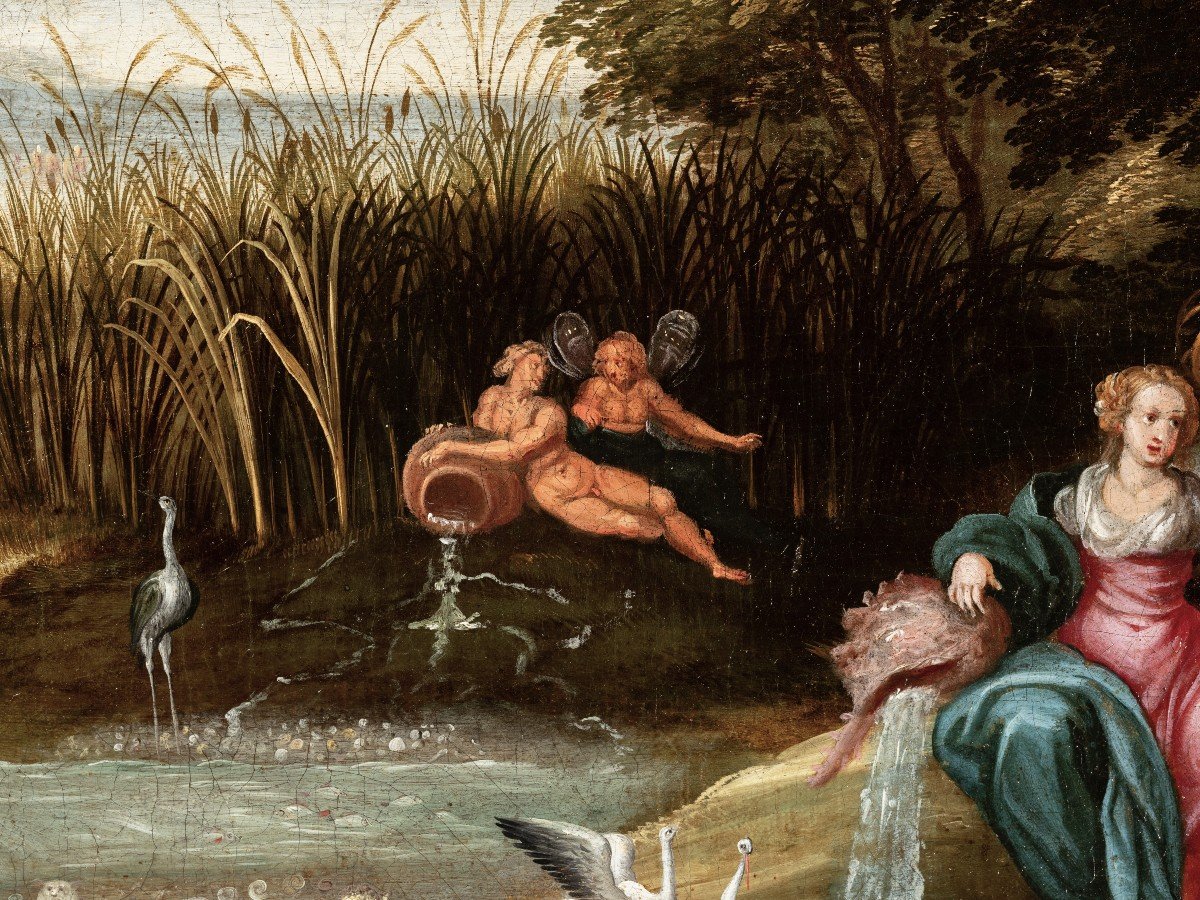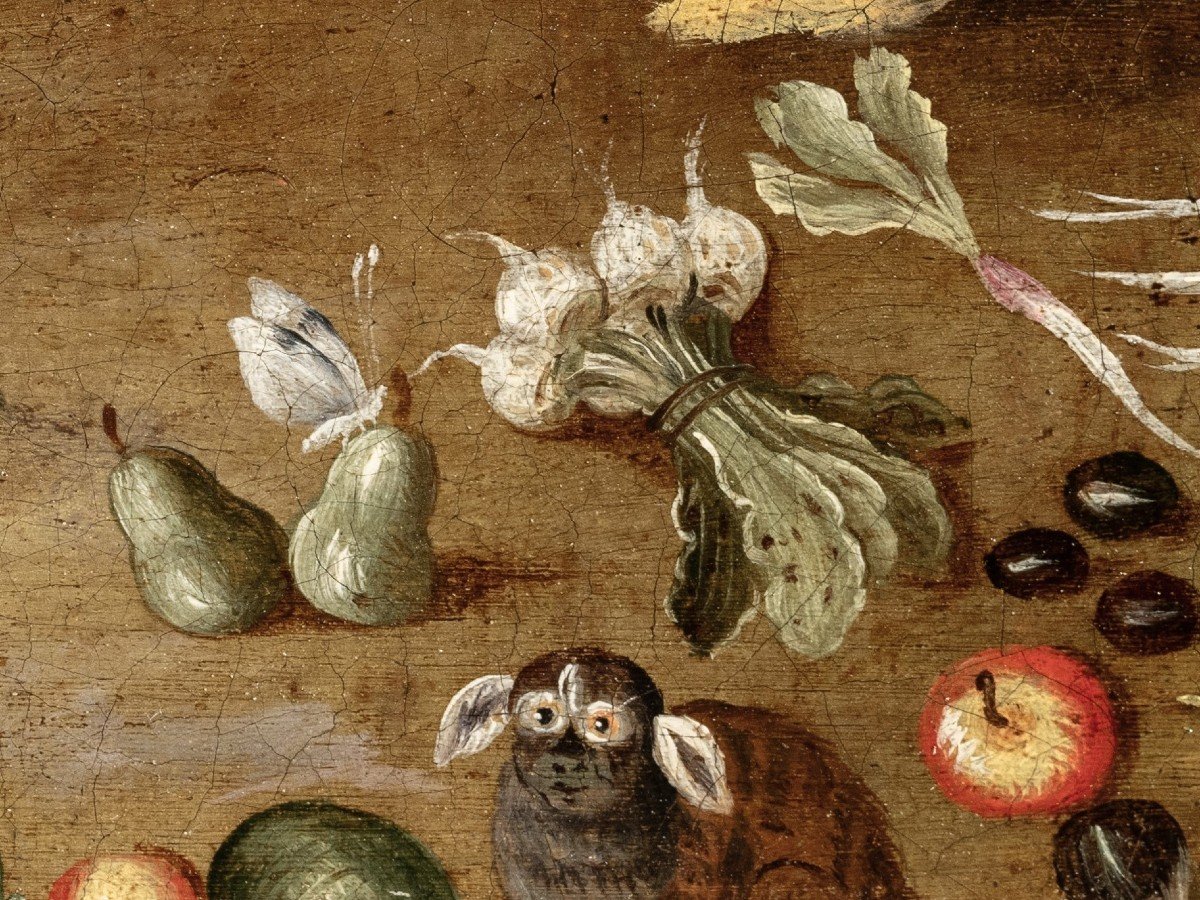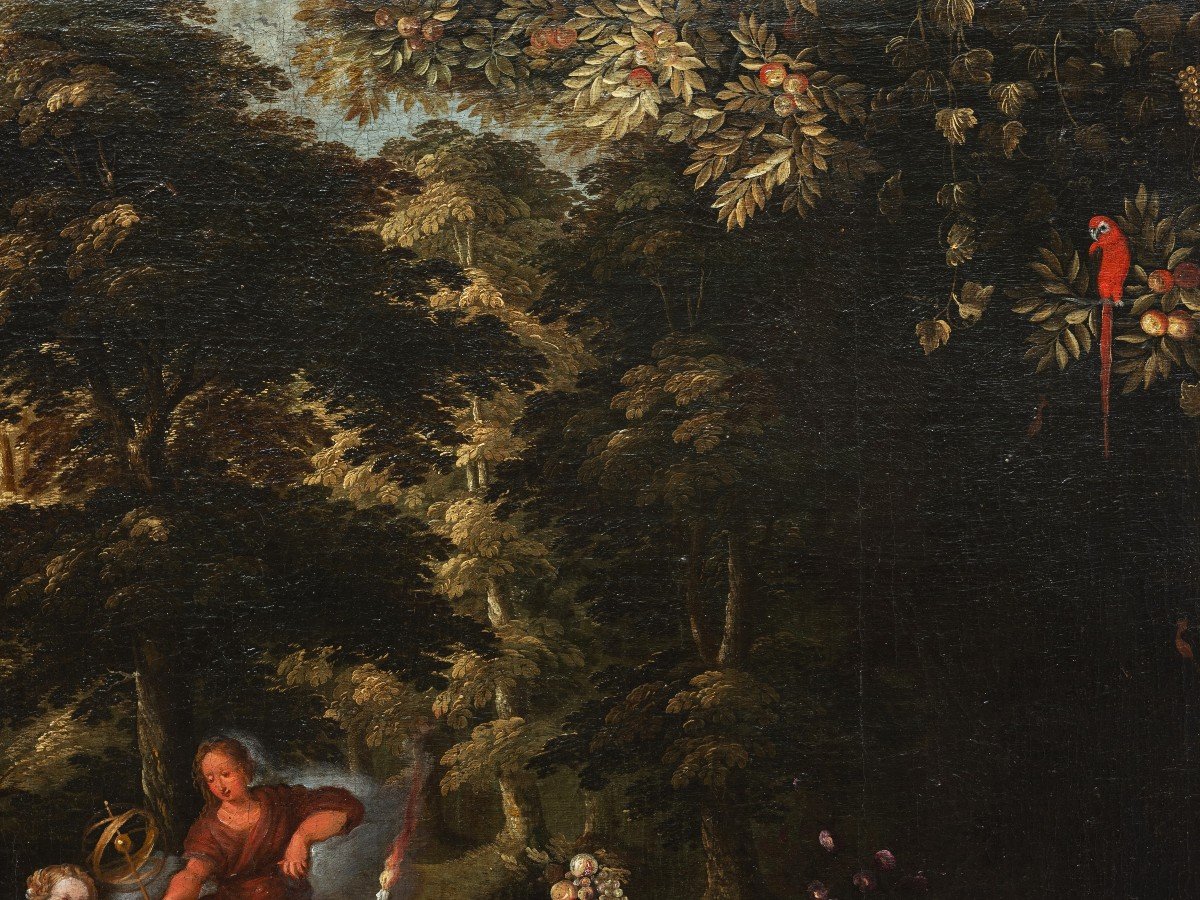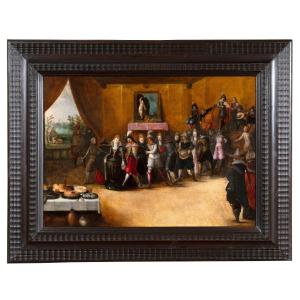Landscape, animals and stilllife by a pupil of Jan Brueghel the Younger (1601-1678)
Figures by pupil of Frans Francken II
Oil on canvas: h. 52,5 cm, w. 82 cm
Giltwood frame
Framed: h. 66 cm, w. 96 cm
Our magnificent painting has as its subject a theme frequently treated in the 17th century, the allegory of the four elements which make up the universe: air, water, fire and earth.
The elements are personified by four mythological figures gathered in the heart of a lush landscape, each with their own attribute.
Ceres symbolizing agriculture and abundance is seated on the right holding a cornucopia. On the left Amphitrite holds a conch shell from which water and fish flow, Urania holds an armillary sphere, symbolizing air. While Vesta, in profile, with her back turned to the viewer, holds a flaming torch.
The composition is divided in two, the forest landscape and the watercourse lined with reeds flowing into the sea.
This separation is accentuated by the still life of flowers, fruits and vegetables on the right balanced by the artistic dispersion of shells and fish on the left.
Finally, the upper left corner is occupied by the air domain: on the bare branches of a tree the different birds are gathered. Other birds fly over the sky. Two intertwined puttis hover above the waters, one equipped with a torch and the other with an armillary sphere.
In the background in the sea Neptune drives his chariot drawn by sea horses.
Our artist strives to paint the splendors of nature with remarkable realism and works meticulously to make fruits, vegetation, birds and marine animals as real as possible.
All the figures, animals, objects and the landscape thus form an idyllic scene representing in a microcosm the entire universe and by extension divine creation in all its splendor.
Beyond an aesthetic pleasure of contemplating the universe, the artist with an encyclopedic spirit like a naturalist or botanist lists the vegetables and fruits placed at the feet of the goddesses, as well as the different flowers that grow on the right .
Of course, this favorite subject of painters from the beginning of the 17th century required a mastery of several genres: human figures, still life as well as landscape, which explained the intervention of two artists.
Our painting is a collaborative work between two students of Antwerp artists: Jan Brueghel the Younger (the specialist in landscape and still life) and Frans Francken II (figure painter), the masters having worked together on several occasions to depict the theme of four elements, it is obvious that they had to delegate certain increasingly numerous orders to the members of their respective workshops.
For the allegories of the four elements executed jointly by Jan Brueghel the Younger and Frans Francken II see below:
Related works:
• Sotheby's (London (England)) 2014-07-10, 51 x 65 cm, oil on canvas, Jan Brueghel the Youngher & Frans Francken II
• Getty Museum, Los Angeles, Jan Brueghel the Younger & Frans Francken II, oil on panel 52,7 x 81,3 cm (inv 71.PB.28), 1635
• Schwerin Staatliches Museum, workshop of Frans Francken II, oil on panel (31x42 cm) (the figures on this painting are very similar to our work)
• Auction house Sophie Himbaut, Aix en Provence, 19/03/2021, oil on panel, 55 x 75 cm, Jan Brueghel the Younger and pupil of Frans Francken II
The first known painting dealing with the theme of the “four elements” by Jan Brueghel the Elder was painted in 1604 for Rudolph, Holy Roman Emperor (kept at the Kunsthistorisches Museum in Vienna, inv GG815).
This work provided the impetus for a great tradition of the theme of the four elements in Antwerp painting, painted mainly by Jan Brueghel the Younger, sometimes divided into four independent works for each element.
This methodical organization is reminiscent of the context of wunderkammers (cabinets of curiosities) and the rise of collecting in the 17th century.
According to a theory which indicates that all materials present on our globe are reducible to four elements: earth, water, air and fire. This theory, amply described by the Greek philosopher Aristotle, was abandoned during the 18th century following progress in chemistry.






























 Le Magazine de PROANTIC
Le Magazine de PROANTIC TRÉSORS Magazine
TRÉSORS Magazine Rivista Artiquariato
Rivista Artiquariato
